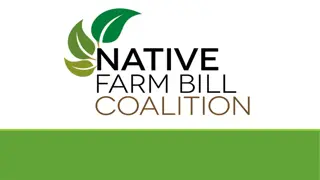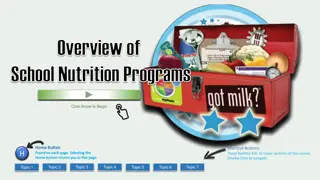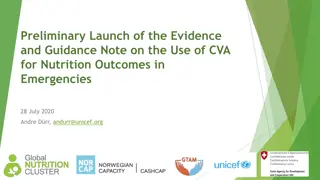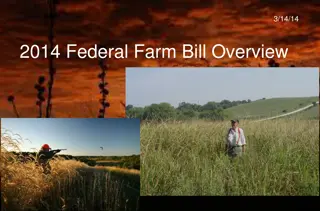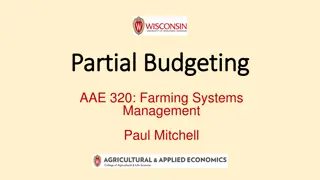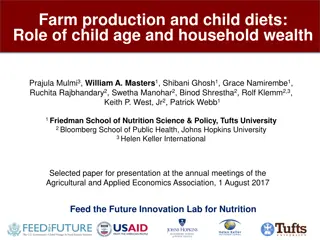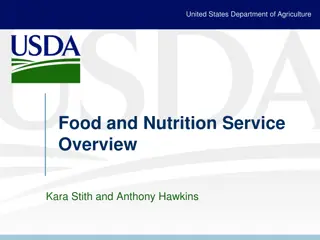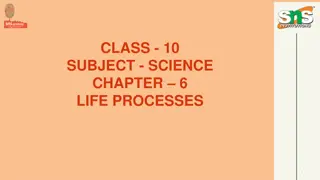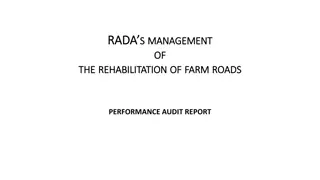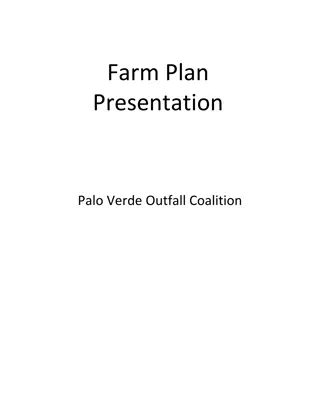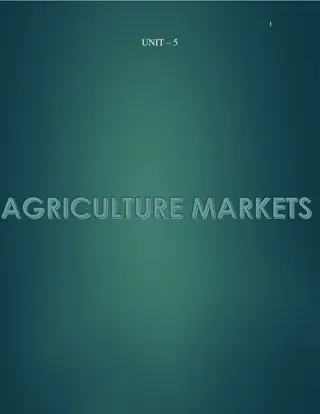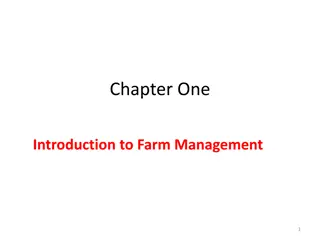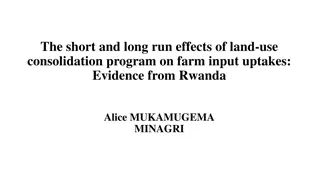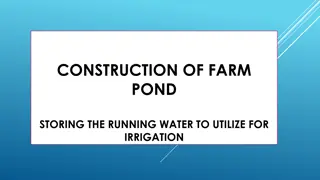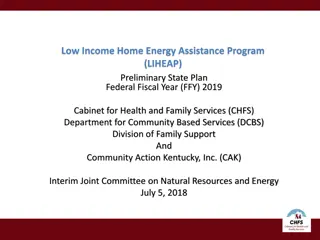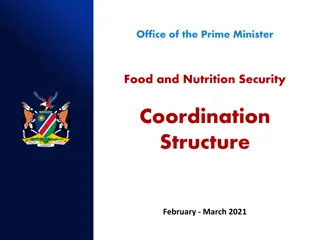Evolution of Nutrition Assistance Programs in the Farm Bill Process
Explore the historical development of domestic nutrition assistance programs in the Farm Bill process, from the establishment of the first food stamp program to the significant impact of the National School Lunch Program. Gain insights into the integration of nutrition policies into agricultural legislation and the expansion of SNAP participation over the decades.
Download Presentation

Please find below an Image/Link to download the presentation.
The content on the website is provided AS IS for your information and personal use only. It may not be sold, licensed, or shared on other websites without obtaining consent from the author. Download presentation by click this link. If you encounter any issues during the download, it is possible that the publisher has removed the file from their server.
E N D
Presentation Transcript
Nutrition Security Embracing solutions that nourish the nation Advancing Nutrition in the Farm Bill Process Stephanie Mercier
Origin of Domestic Nutrition Assistance Programs The first farm bill, the Agricultural Adjustment Act of 1933, indirectly addressed hunger Main mechanism, purchase of surplus commodities, was used to establish pilot school lunch and food stamp programs Both pilots halted at beginning of World War II, food no longer in surplus
National School Lunch Program Formally Established The National School Lunch program was established in 1946 Supported by President Truman due in part to share of young men rejected by draft boards from poor nutrition School lunch and other child nutrition programs not part of farm bill process due to House Ag chair decision to cede jurisdiction to House Ed and Labor committee in 1967
Food Stamp Program (now SNAP) Formally Established The Food Stamp program was established in 1964, a more than 20-year hiatus since the New Deal pilot was ended Had been piloted in Kennedy administration, made permanent law early as part of LBJ s Great Society campaign Pilot had 380,000 participants in 1964 today, SNAP serves more than 41 million people
SNAP Participation, 1965-2021 60000000 50000000 40000000 30000000 20000000 10000000 0 1965 1966 1967 1968 1969 1970 1971 1972 1973 1974 1975 1976 1977 1978 1979 1980 1981 1982 1983 1984 1985 1986 1987 1988 1989 1990 1991 1992 1993 1994 1995 1996 1997 1998 1999 2000 2001 2002 2003 2004 2005 2006 2007 2008 2009 2010 2011 2012 2013 2014 2015 2016 2017 2018 2019 2020 2021 Source: USDA/FNS
Food Stamp Program brought into farm bill process in 1977 The requirement that recipient households purchase some stamps in order to receive benefits under the program was dropped in 1977 This program was pulled into the farm bill process for the first time. Step taken to bolster support for farm bill among urban members of Congress, who otherwise had little stake in traditional farm bill programs
F a r m p r o g r a m v e r s u s n u t r i t i o n s p e n d i n g a s s h a r e o f F e d e r a l b u d g e t o u t l a y s P e r c e n t 4 Farm Program Nutrition 3 2 1 0 1940 1996 2007 2018 S o u r c e : C B O , O M B , U S D A b u d g e t p r o j e c t i o n s a n d h i s t o r i c a l b u d g e t d o c u m e n t s . I n c l u d e s c r o p i n s u r a n c e p r e m i u m s u b s i d i e s a n d i n d e m n i t i e s .
Initial efforts to improve diets of program recipients WIC Farmers Market Nutrition Program piloted in1992 DOD Fresh program piloted in 1996 Fresh Fruit and Vegetable program for students in low-income school districts piloted in 2002 Food Insecurity Nutrition Incentive program (now GUSNIP) piloted in 2008
Current funding levels and hopes for future Combined, these four programs have received about $1.2 billion annually in recent years This total is equivalent to less than one percent of the total nutrition assistance funding for FY22 for the three main programs (SNAP, School Meals, and WIC), about $172 billion in 2022 Given these programs effectiveness in bolstering nutritional status, it would make sense for that amount to be increased in the next farm bill



